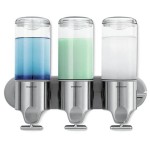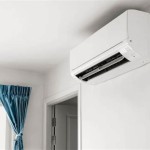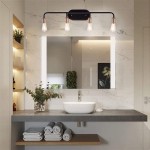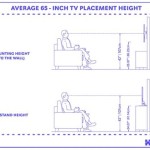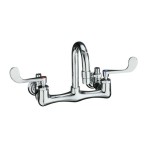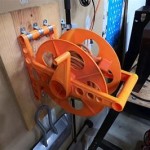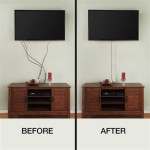Wall Mount Fluorescent Light Fixtures: A Comprehensive Guide
Wall mount fluorescent light fixtures offer a practical and energy-efficient solution for a variety of lighting needs. These fixtures are designed to be mounted directly onto walls, providing illumination while saving floor space. They are commonly found in commercial settings, industrial environments, and residential areas where functional lighting is paramount. This article provides a detailed overview of wall mount fluorescent light fixtures, covering their types, benefits, applications, installation, and maintenance.
Types of Wall Mount Fluorescent Light Fixtures
Fluorescent light fixtures are broadly categorized by bulb type, design, and specific application. Understanding these categories is crucial for selecting the appropriate fixture for a particular setting.
Linear Fluorescent Fixtures: These fixtures are the most common type and utilize long, tube-shaped fluorescent lamps. They are typically available in various lengths, such as 2-foot, 4-foot, and 8-foot, and wattages. Linear fluorescent fixtures provide a broad and even distribution of light, making them suitable for general illumination in hallways, offices, and workshops. They come in different styles, including strip lights, wraparounds, and recessed troffers adapted for wall mounting.
Compact Fluorescent Fixtures (CFL): CFL fixtures use coiled or folded tubes, offering a more compact design than linear fluorescent fixtures. While less common in purely wall-mounted applications, they can be integrated into sconces or decorative fixtures. CFLs are energy-efficient and have a longer lifespan than incandescent bulbs. They are often used in residential settings or areas where space is limited.
T5 and T8 Fixtures: These designations refer to the diameter of the fluorescent tube. T8 lamps are 1 inch in diameter, while T5 lamps are 5/8 inch in diameter. T5 fixtures are generally more energy-efficient and produce more light output than T8 fixtures of the same length. T5 fixtures are often preferred in commercial and industrial settings where high light levels are required. T8 fixtures offer a balance between cost and performance and are still widely used.
Vapor-Tight Fixtures: These fixtures are designed to protect the lamp and ballast from moisture, dust, and corrosive elements. They are typically manufactured with a sealed enclosure and a gasketed lens. Vapor-tight fixtures are commonly used in damp or wet locations, such as garages, car washes, and industrial facilities.
Emergency Lighting Fixtures: These fixtures are equipped with a battery backup system that automatically activates in the event of a power outage. They provide temporary illumination to guide occupants to safety during emergencies. Emergency lighting fixtures are required in many commercial buildings to comply with safety codes.
Decorative Fluorescent Fixtures: These fixtures are designed with aesthetics in mind. They are often used in residential and commercial spaces where the appearance of the lighting is important. Decorative fluorescent fixtures can feature various shapes, finishes, and designs to complement the surrounding décor. They may incorporate shades, diffusers, or reflectors to enhance the light output and create a specific ambiance.
Benefits of Using Wall Mount Fluorescent Light Fixtures
Wall mount fluorescent light fixtures offer several advantages over traditional incandescent or halogen lighting options. These benefits contribute to their widespread adoption in various applications.
Energy Efficiency: Fluorescent lamps are significantly more energy-efficient than incandescent bulbs. They produce more light output per watt of electricity consumed, resulting in lower energy bills. This energy efficiency makes them an environmentally conscious choice, reducing carbon emissions and promoting sustainability.
Long Lifespan: Fluorescent lamps have a much longer lifespan than incandescent bulbs. They can last for thousands of hours, reducing the frequency of replacement and lowering maintenance costs. This longevity is particularly beneficial in hard-to-reach areas where replacing bulbs can be challenging.
Cost Savings: While the initial cost of fluorescent fixtures may be higher than incandescent fixtures, the long lifespan and energy efficiency of fluorescent lamps result in significant cost savings over the long term. The reduced energy consumption and replacement costs can quickly offset the initial investment.
Variety of Light Output and Color Temperatures: Fluorescent lamps are available in a wide range of light output levels and color temperatures. This allows users to select the appropriate lighting for specific tasks or environments. Color temperature is measured in Kelvin (K) and ranges from warm white (2700K) to daylight (6500K). Warmer color temperatures are suitable for creating a relaxed ambiance, while cooler color temperatures are ideal for task lighting.
Improved Light Quality: Fluorescent lamps offer a more diffused and even light distribution compared to incandescent bulbs. This can reduce glare and eye strain, creating a more comfortable and productive environment. Some fluorescent lamps also have a high color rendering index (CRI), which indicates how accurately they render colors compared to natural light.
Reduced Heat Output: Fluorescent lamps produce less heat than incandescent bulbs, which can help to reduce cooling costs in air-conditioned spaces. This is particularly beneficial in large commercial or industrial facilities where lighting can contribute significantly to the overall heat load.
Applications of Wall Mount Fluorescent Light Fixtures
Wall mount fluorescent light fixtures are versatile and can be used in a wide range of applications. Their energy efficiency, long lifespan, and variety of light output options make them a suitable choice for various settings.
Commercial Buildings: Fluorescent fixtures are commonly used in offices, retail stores, and other commercial buildings. They provide general illumination for hallways, work areas, and display areas. They are also used in emergency lighting systems to ensure safety during power outages.
Industrial Facilities: Fluorescent fixtures are widely used in warehouses, factories, and other industrial facilities. Vapor-tight fixtures are often used in damp or wet locations to protect the lamps and ballasts from moisture and corrosion. High-bay fixtures are used in areas with high ceilings to provide sufficient illumination for workers.
Residential Areas: Fluorescent fixtures are used in homes for various lighting applications. They can be used in kitchens, bathrooms, garages, and basements. Compact fluorescent lamps (CFLs) are often used in sconces and other decorative fixtures.
Healthcare Facilities: Fluorescent fixtures are used in hospitals, clinics, and other healthcare facilities. They provide general illumination for patient rooms, examination rooms, and hallways. Some fixtures are designed with antimicrobial coatings to help prevent the spread of bacteria.
Educational Institutions: Fluorescent fixtures are used in schools, colleges, and universities. They provide general illumination for classrooms, libraries, and hallways. They are also used in laboratories and workshops to provide task lighting for students.
Parking Garages: Fluorescent fixtures are used in parking garages to provide illumination for drivers and pedestrians. Vapor-tight fixtures are often used to protect the lamps and ballasts from moisture and dust.
Installation and Maintenance of Wall Mount Fluorescent Light Fixtures
Proper installation and maintenance are crucial for ensuring the optimal performance and longevity of wall mount fluorescent light fixtures. Incorrect installation can lead to safety hazards and reduced efficiency, while neglecting maintenance can shorten the lifespan of the fixture.
Installation Procedures: Installation should always be performed by a qualified electrician. The process typically involves mounting the fixture to the wall using appropriate hardware, wiring the fixture to the electrical system, and installing the fluorescent lamps. It is essential to follow all local electrical codes and safety regulations. Before starting the installation, ensure that the power supply is turned off to prevent electric shock.
Choosing the Right Mounting Height: Consider the intended use of the light and the size of the space. A higher mounting height will provide wider coverage, but may reduce the intensity of the light. A lower mounting height will provide more focused light, but may not cover a large area. Ensure the mounting height complies with any building codes or regulations.
Wiring Considerations: Ensure that the wiring is properly grounded and that the correct gauge wire is used for the circuit. Follow the manufacturer's wiring diagram to connect the fixture to the power supply correctly. Incorrect wiring can damage the fixture and create a fire hazard.
Lamp Replacement: When replacing fluorescent lamps, use the correct lamp type and wattage. Ensure that the fixture is turned off and that the lamps are cool to the touch before handling them. Dispose of used fluorescent lamps properly, as they contain mercury. Many municipalities offer recycling programs for fluorescent lamps.
Cleaning and Maintenance: Regularly clean the fixture to remove dust and debris. Use a soft cloth and a mild detergent. Avoid using abrasive cleaners, as they can damage the fixture's finish. Inspect the fixture periodically for any signs of damage, such as cracks or loose wiring. Repair or replace damaged fixtures immediately.
Ballast Replacement: The ballast is a crucial component of a fluorescent fixture that regulates the voltage and current to the lamp. If the ballast fails, the lamp will not light. Ballasts can fail due to age, overheating, or power surges. When replacing a ballast, use a compatible replacement ballast that meets the manufacturer's specifications. Disconnect the power supply before replacing the ballast.
By understanding the different types of wall mount fluorescent light fixtures, their benefits, applications, and proper installation and maintenance procedures, individuals and businesses can make informed decisions to optimize their lighting solutions for efficiency, cost-effectiveness, and safety.

Fluorescent Wall Lights Mount Light Fixtures

Image Result For Wall Mounted Desk Fluorescent Light

Lithonia Lighting T8 32 W Max Fixture Watt Wall Bracket Fluorescent 3xy92 Wc 1 Mvolt Geb10is Grainger

Lithonia Lighting T8 64 W Max Fixture Watt Wall Bracket Fluorescent 3xy77 Wp 2 32 Mvolt Geb10is Do Grainger

Surface Mounted Light Fixture Mod 46 Indirect Direct Litecontrol Recessed Wall Fluorescent Li

Slf Surface Or Wall Mount Light H E Williams Inc

A Light M1 Alameda Wall Mount Led Fluorescent Fixture Alconlighting Com

Integration Bracket Led Light Outdoor Wall Mounted Tunnel Tube Fixture Ceiling Lights Linkable Batten Fitting Triproof Lighting Made In China Com

Spi Lighting Custom Comercial

Integration Bracket Led Light Outdoor Wall Mounted Tunnel Tube Fixture Ceiling Lights Linkable Batten Fitting

